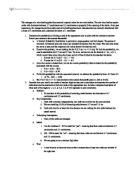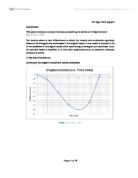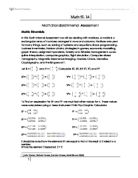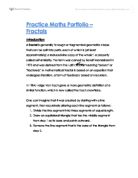The manager of a wine bottling plant has received a special order for two wine bottles. The two wine bottles require corks with diameters between 2.7 centimeters and 3.3 centimeters to properly fit the opening of the bottle. From past experience, the manger knows that corks used at his bottling plant have diameters that are normally distributed with a mean of 3 centimeters and a standard deviation of 1 centimeter.
- Determine the probability of finding a cork of the appropriate size in plant cork bin selected at random. Round your answer to the nearest thousandth.
- A Normal Probability Distribution is symmetric, single-peaked, and bell shaped. The points of inflection lie between plus and minus one standard deviations from the mean. The total area under the curve is zero, and the empirical rule values should fit relatively well.
- To solve this problem, we are looking for the P (2.7 cm < x < 3.3 cm). To find this probability, we need to standardize the 2.7 cm and 3.3 cm. Do to so, we have to use the formula z = (xi – x) / s which is your data value minus the mean, and all of that divided by the standard deviation.







